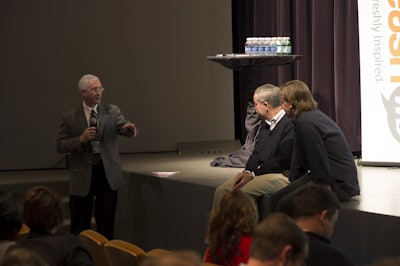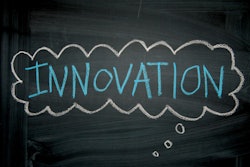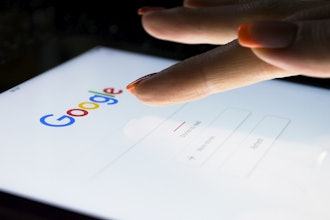
Recently, Industrial Distribution had the chance to speak with Barrett Thompson, General Manager of Pricing Excellence Solutions at Zilliant, about his attendance at UnleashWD and how the event has shaped his understanding of how B2B companies should be responding to the success of ecommerce in the B2C space. Here are his thoughts.
UnleashWD was created in order to bring people from outside of the distribution industry into the distribution environment where they can share ideas that distributors can pick up and apply in their world. The guest speakers ranged from an admiral in the navy to a world renowned to a chef to many business leaders who have lead innovation and transformation across a broad range of industry.
Zilliant was there to facilitate a question and answer session at the end of a series of presentations. The focus was on innovation and thinking innovatively in distribution, but not by examining what other people are doing in distribution, but by looking outside and seeing where people are innovating in manufacturing and process and distribution. The chef spoke about 3D printing food, which is radical if you really think about it. The idea was to get people to think outside of their frame of reference so that they could see and adopt ideas that have shown to be successful in other environments.
A couple ideas that I took away from the event:
1.) Don’t be afraid of experimentation. Be prepared to experiment, and be okay with the idea that many of those experiments will fail. Those are the things that open up the doors for you to find new ways to serve customers, new value propositions, new products, and new services that you otherwise cannot find. You cannot find it by waiting around for someone else to experiment and then copy it. You have to find it yourself by creating experiments and not being afraid of the fact that they are going to fail.
2.) You have to be the disruptor in your own industry so that you will not, in fact, be the one who is later disrupted by someone else: someone who has a more innovative business model, who has found a way to connect better with customer needs, or has found new customer needs that you overlooked because you were operating on a business model that you inherited from three decades ago. That was reinforced over and over through the examples of most every speaker at the event. Be the disruptor so that you won’t be disrupted.
B2B companies should strive to become more like the B2C channel as far as ecommerce and relationships are concerned.
B2B companies need to acknowledge that B2C companies are in the lead when it comes to studying customer behaviors and predicting what might be next or what might be best for that customer. We have experienced this – each one of us – when we go to an ecommerce website. Take Amazon.com for example: Amazon.com is using statistical modeling techniques and algorithms to look through all of the customer purchase data that they have on record. Then, they can predict what you should be buying based on your purchase behavior and the purchase behavior of other people like you. We often experience this through the middle of the screen that says “Customers who bought this product also like . . . the following things.” Or “Recommended for you.”
We take that pretty much as status quo in the B2C ecommerce environment, and B2B has an opportunity to borrow that practice and to borrow predictive algorithms that will look through the B2B data and apply the appropriate analysis in a B2B setting. The actual analysis might vary, but looking through the data to make similar predictive suggestions for buyers is a possibility, especially to ask the question of what other items might this buyer be interested in. This is just one example that is a great one for B2B to mimic or steal from B2C: the opportunity to identify these cross sell activities.
A second key area that B2B companies should focus on from the B2C market is tracking when a customers buying behavior is shifting, particularly when they are buying less than they would normally buy. We should be treating that as an early warning sign that there is something that needs to happen there and that something needs to be done to restore that relationship.
One example: at the gym, they are able to track by the way that you swipe your ID card when you come in, and how long you are there. They are able to see your usage patterns. The gym membership model expects that you are going to be a customer for a long time and that each month they will collect their membership fee. If they see your usage begin to decline, say you start out as a three-day a week workout person and the frequency declines to once a week or there is even a week when you don’t come by – they see the shift in this pattern. That could indicate to them that you are at risk and you might get a call from someone who asks you to sign up for a class or start working with a trainer, a way to get you engaged again so that can continue to collect their membership fees.
In the B2B world, it is now possible to do a similar thing. It is possible to examine the customer’s purchasing behavior and to track those signals through time and identify that the customer may be defecting. If you are the B2B seller and you can be alerted to this, you have an early indication. You have the opportunity to reach out to that customer and find out if in fact they have had a true shift that explains the decline in their purchase behavior, or whether they have been experiencing a problem that you are not aware of. If you catch that early on, you have a much stronger chance of retaining that existing customer and retaining that business. That is something that the B2C channel does very well. Once you stop consuming a service, they run around and send you coupons and rewards to try to get you to come back. As a B2B business, you need to capitalize on the data that is available to you.
The data is there, the raw material to drive the predictive algorithms is there. The B2B challenge is to acknowledge that there is value locked in that data and to use an algorithm approach and to turn that data into actionable insights.
B2C has figured out that they can’t compete on price alone. There are many companies in the consumer space where the value proposition is not just the price. Take Starbucks for example – they have a commodity product: coffee. They have been able to differentiate themselves with their offering, which is a whole unique user experience. They are differentiating themselves, and when they do that they are able to charge a premium.
Suppliers and distribution can find ways to differentiate that customer experience. It goes beyond just the product features and functions, and goes beyond the price that you are charging. It’s an oversimplification to look at your distribution business as simply a widget with a price tag. There is so much more. You don’t have to just compare on price.
Barrett Thompson is the General Manager of Pricing Excellence Solutions at Zilliant, a company that provides predictive, data-driven guidance, enabling better pricing and sales decisions to help businesses make their numbers. Their Margin Max 8.0 is a multi-tenant SaaS application that enables B2B companies to answer those three critical questions for sales professionals: What customers should I be speaking to? What products should I be selling them? What prices should I charge? Zilliant uses advanced science overlaid on transaction data to determine the answers to each of those questions in order to generate predictive guidance for sales teams.






















